Finca Luna Nueva began in 1994, when an herbal company named New Moon Extracts contacted Steven Farrell and asked him to find an organic farm that could grow a large amount of ginger. Steven knew Walter Arias, who is one of our current farmers, and Walter recommended a large parcel of fallow land that was available for purchase. Steven thought the property was perfect, and so began our farming journey.
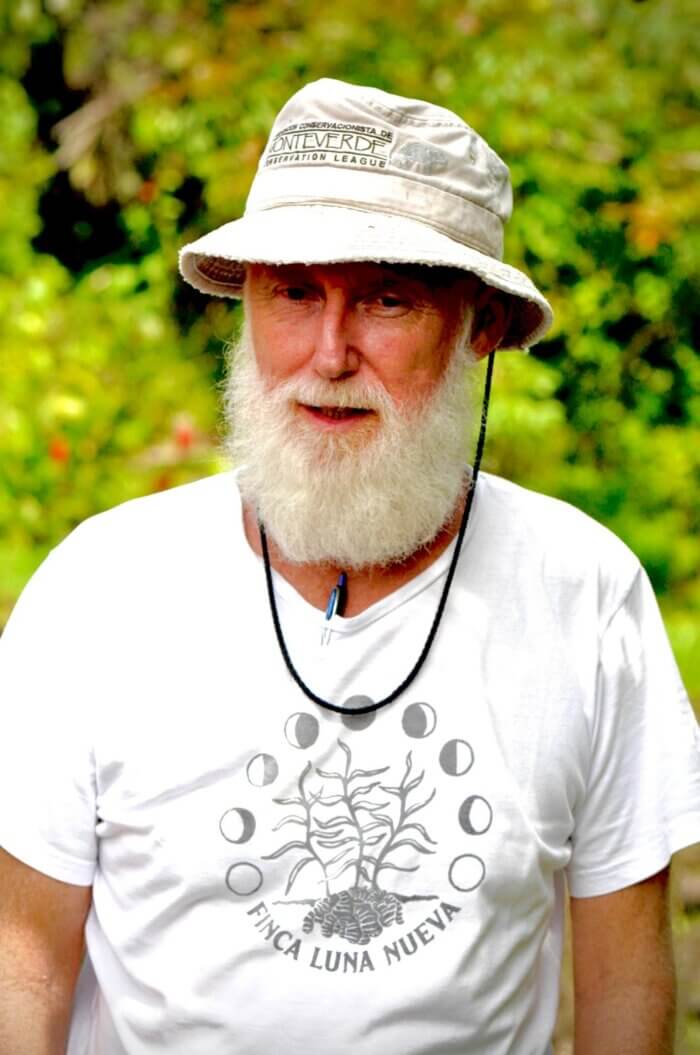
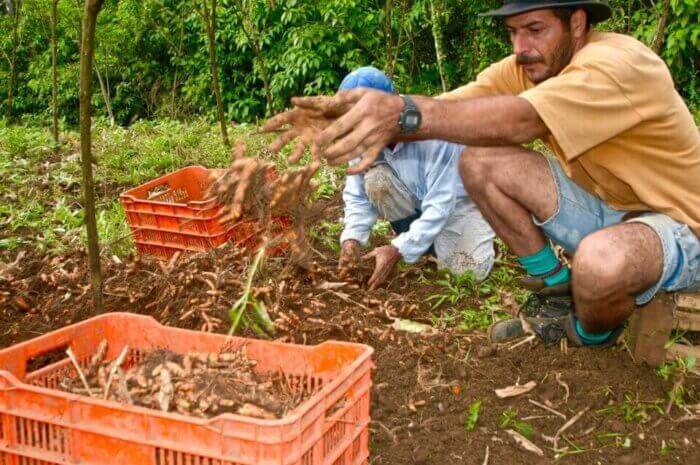

These facts explain our logo. New Moon in Spanish is Luna Nueva, and farm is finca, so Steven called the property New Moon Farm or Finca Luna Nueva. And the plant you see in our logo is ginger, our first crop. But what about the phases of the moon you see in the logo?
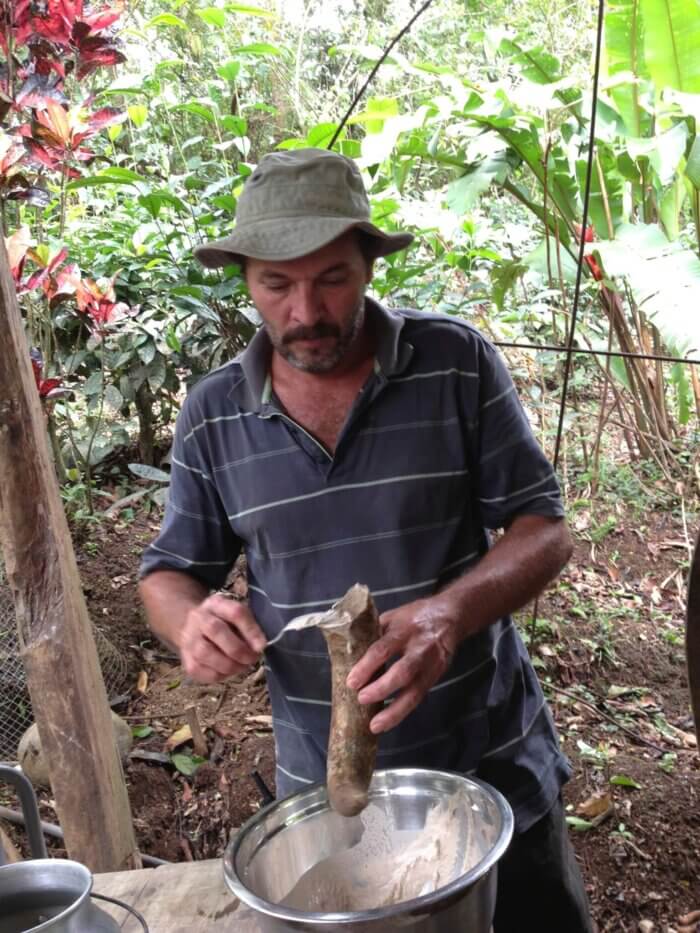
Soon after we started our organic farm we transitioned to Biodynamic farming, a mystical system of organic farming created by the German scholar Rudolf Steiner. That system required us to plant and tend to our crops according to the phases of the moon. Here’s a photo of our very first farmer, Walter’s brother Carlos Arias, creating biodynamic preparations using cow horns filled with mystic crystal potions!
We soon began to grow turmeric in addition to ginger, and while we were USDA certified organic and Demeter-certified Biodynamic, our farm actually looked a lot like the normal farms you’d see in North America and Europe. We planted large fields with one crop – that’s called monoculture – and we planted first in rows and later in mounds. We tilled the land with oxen and used lots of compost, and we even trained many farmers from around the world about how to farm biodynamically. We sure thought we were the bee’s knees – the best of the best, and we were proud that we were growing great food – all the time assuming that we were helping improve the soil.
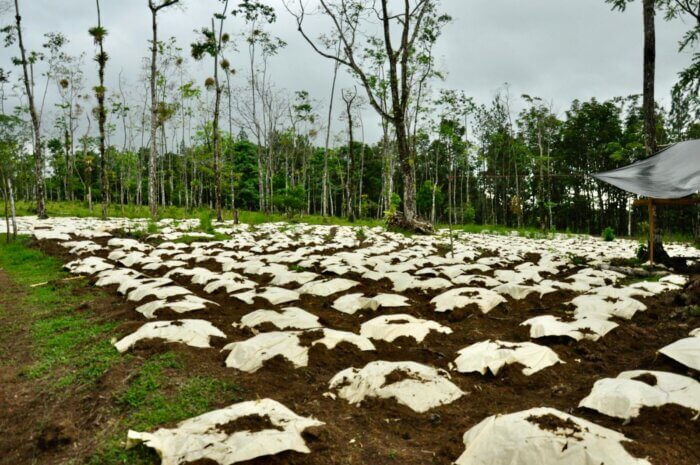
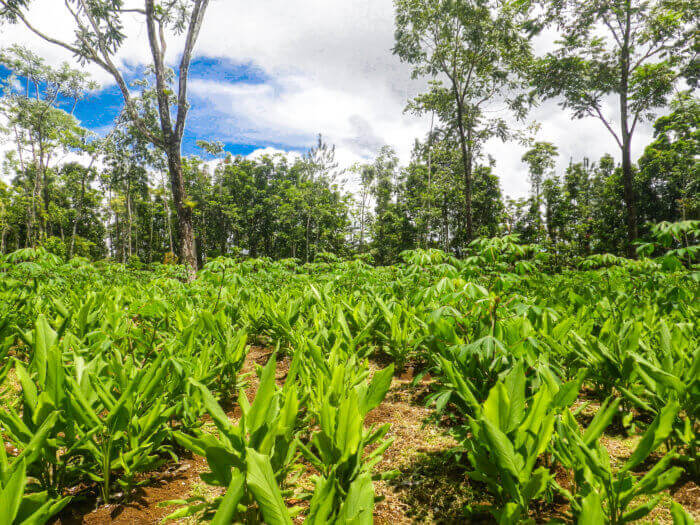
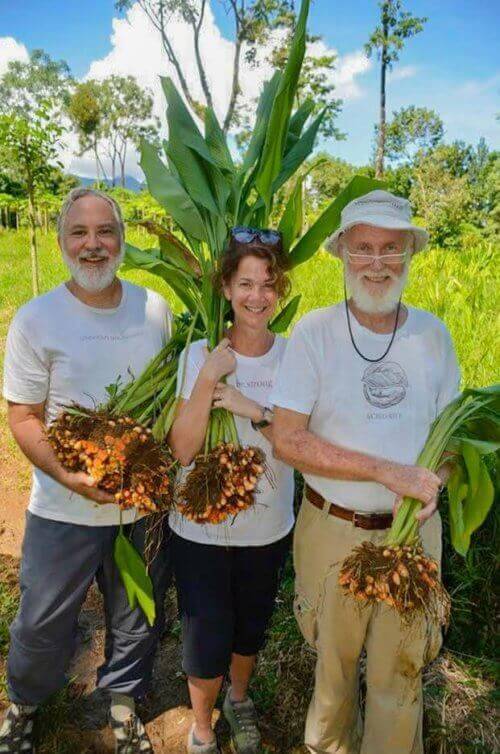
But then around 2010 my daughter Sara and I met with Dr. Tim LaSalle at the Rodale Institute in the United States and learned about what he called regenerative agriculture. We had never heard of this before, and frankly it was amazing to hear that agriculture done right might be part of the solution to our climate crisis.
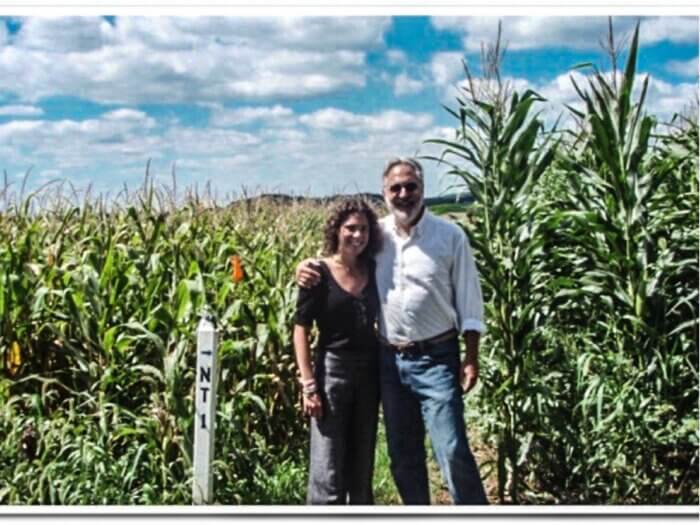
Here’s what we learned in that important meeting (and yes, over the next 15 years!):
First, there’s way too much carbon dioxide in today’s atmosphere, and that’s causing the planet to heat up in ways leading to droughts, floods, and terrible weather events. A whole lot of that excess CO2 came directly from agricultural mistakes like excessive tilling, monoculture planting, and inappropriate chemical fertilization.
Second, the good news is plants are designed to draw down CO2 from the atmosphere via a process called photosynthesis.
Plants eat sunlight. Their leaves are basically solar panels, catching little bundles of solar energy called photons like a person might catch a ball.
Grandson Nico learning how to catch photons of light!
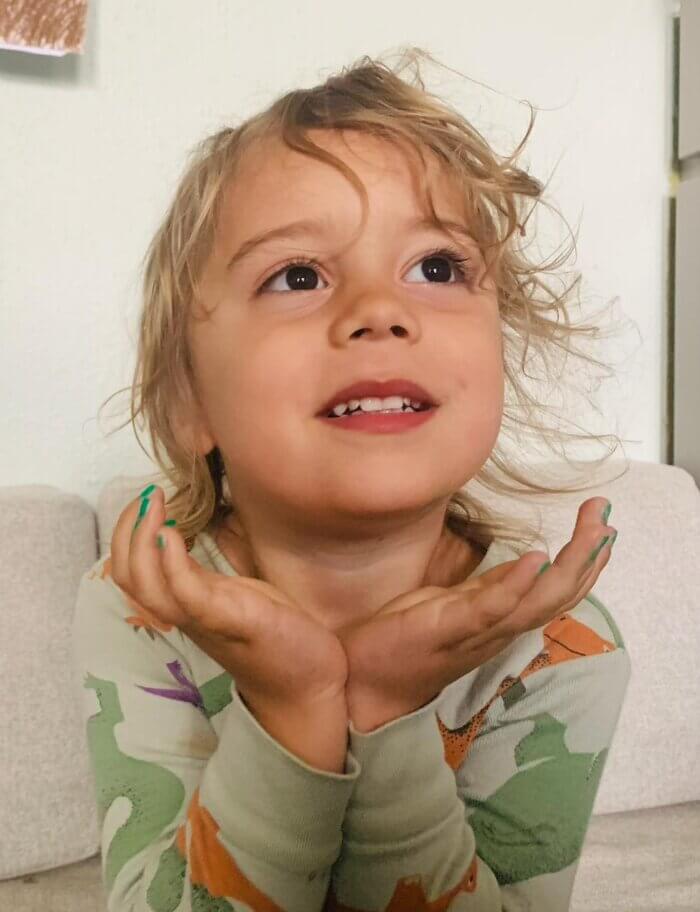
Plants also speak the language of carbon dioxide – they breathe in CO2 through their leaves. They also soak up water through their roots. Then plants take the solar energy they’ve collected and use it to break apart carbon dioxide and water, creating from those atomic building blocks something that everything in nature likes to eat: carbohydrates!
Plants need that edible solar energy, too, and use some of those carbohydrates for their own metabolic needs, But plants also need other nutrients like nitrogen. While nitrogen is all around us – it’s 78% of our atmosphere – plants can’t directly consume it. But certain microbes can, and here’s where it gets really interesting. This leads to our THIRD main point: Plants and microbes, at the tips of roots, basically trade nutrients – plants swap carbohydrates for microbial nitrogen or phosphorus and other nutrients.
Parental alert before you head the FOURTH point: The language that follows is probably PG13! Microbes gobble up those carbohydrates like a kid in a candy store, and as a consequence of all that eating, the microbes, well, they poop. Hey, we all eat and poop, and microbes are no exception. And just like every other living thing, microbes also at some point die. Poop + dead microbes = a thing with a fancy name called “necromass.” You can also call it the gummy stuff that mixes with minerals and creates something we call new soil.
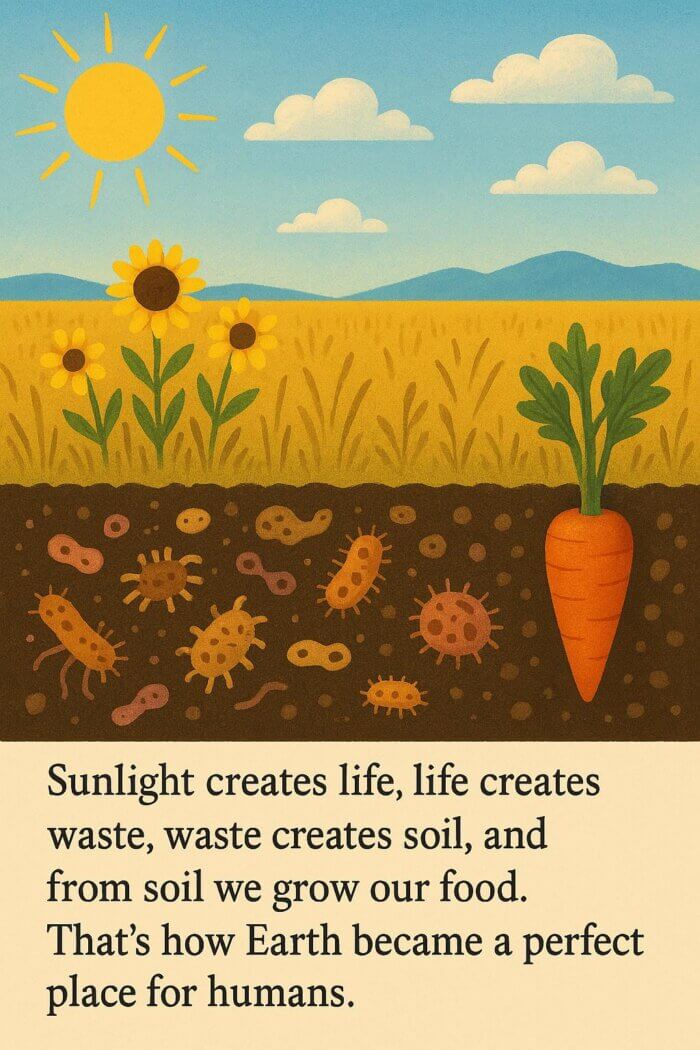
POINT FIVE: This natural process of soil and food creation seriously changed in about 1890. Starting way back then and continuing to this day, some businesses and farmers decided to use chemical fertilizers and feed chemical nutrients directly to plants. And when they did that the plants didn’t need to share their carbohydrates with soil microbes, The underground commodities exchange shut down, and new soil was no longer being created. Instead, soil was being lost all around the world – at the alarming rate of about 35 billion tons a year. Many scientists believe that if farming doesn’t dramatically change there soon won’t be any soil left in which to grow food, and we obviously can’t sit back and wait for that to happen. We owe something more to future generations!
This is scary news, but my daughter and I also learned that if farmers go back to farming in ways that respect that underground commodities exchange, maybe, just maybe, we could reverse climate change and rebuild and regenerate damaged soils and ecosystems. Farming in such a way should be called “regenerative farming,” and that was how we assumed we were farming back home at Finca Luna Nueva.
So I went back to Luna Nueva and did some soil testing. We took soil cores that determine how much carbon was in the soil – that’s a proxy for the health of the soil. And what we found was shocking: the fields we were caring for were suffering in comparison to the areas of the farm that we were ignoring. Yes, our human management, even though it was organic and biodynamic, was failing to regenerate the soil, while Mother Nature’s management was performing brilliantly.
The problem is we here at Luna Nueva need to grow food – for you, our beloved guests. And the world needs farmers to grow food and textiles for all of us. But the evidence is irrefutable: farmers dare not continue to grow food and textiles in a way that further damages our planet. And we can’t simply rely on labels or practices that we think work – we need real and immediate ecological outcomes and not slogans.
We actually have to farm in way that mimics Mother Nature, draws down carbon, and rebuilds and regenerates soil.
And what might that look like? Before Steven Farrell purchased this land and started our farm, the prior owners managed a cacao field here using cacao cultivars provided by the government. We maintain part of that old cacao field as sort of a museum. It’s how most people – it’s how we – used to farm. Notice that the “museum” field is a monoculture – just cacao, with leaves of just one type and at just one level. This is how we humans tried to impose our will on the land. But on our farm tour you can turn your gaze across the trail to another part of that old cacao field and view a portion that was allowed to grow without human intervention. We got out of Mother Nature’s way! This area is now bursting with biodiversity, with plants of every height, with leaves of every shape and size, with a wide variety of flowers and fruits, all drinking in the sun and dancing to their own music.
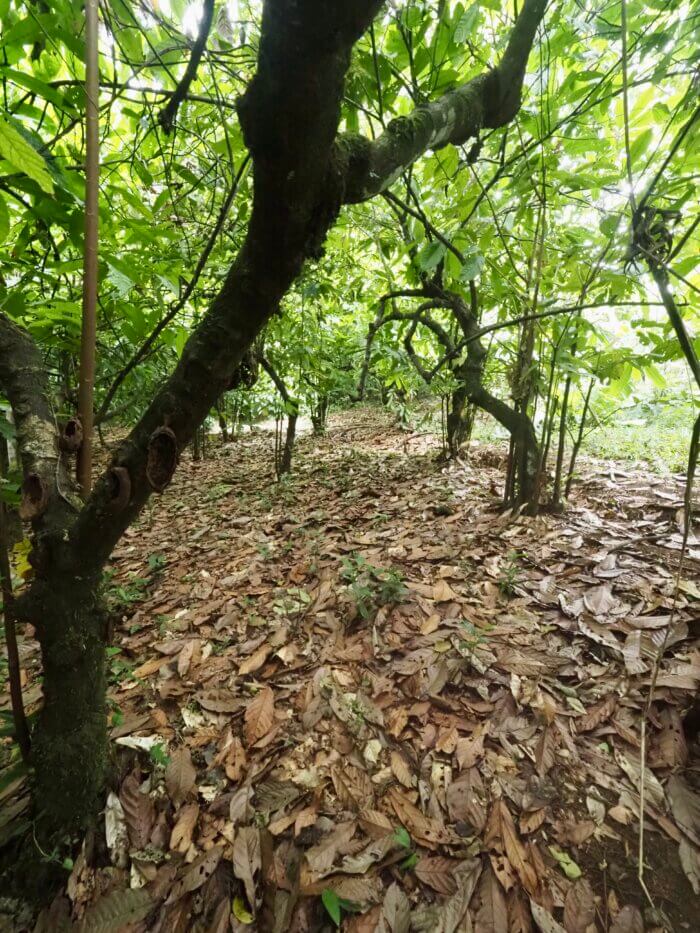

How, then, should our farm look? Consider where we are, on the Caribbean slope of the continental divide, mere miles from the Arenal Volcano, ten degrees north of the equator, with five+ meters of rain a year, and in an area that historically was part of the vast Atlantic rainforest. If we could only listen to this ecosystem speak, we could surely hear that it wants to be a rainforest. So let’s listen. Let’s figure out how to farm here in a way that resembles a rainforest. Can farmers in temperate zones figure out to farm in a way that mimics the extraordinary creative power of a prairie? Can your imagination take you to a place where the line between a farm and forest is obscured by the overwhelming abundance and diversity of plant life? Can we feed the world and at the same time regenerate our soils and our planet? Can we draw down carbon and reverse climate change?
You’re about to see our living laboratory where we attempt to answer those all-important questions. Let’s go see and taste how Finca Luna Nueva is farming like our future depends on it!
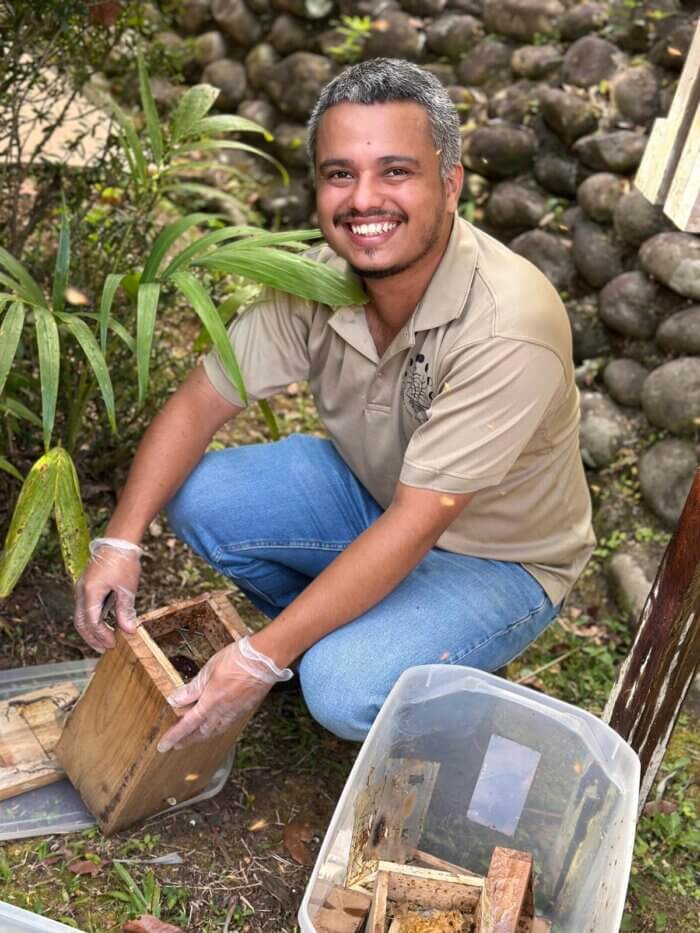
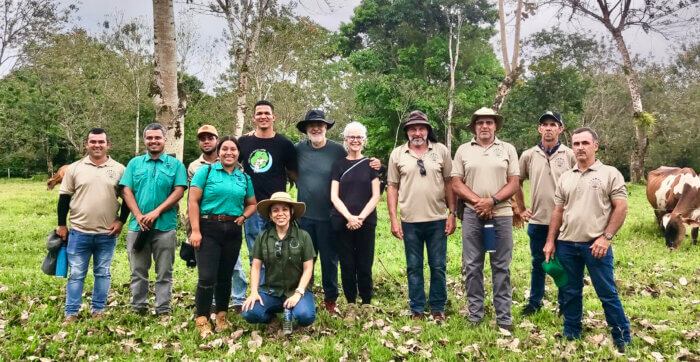
The Finca Luna Nueva Farm Team!

